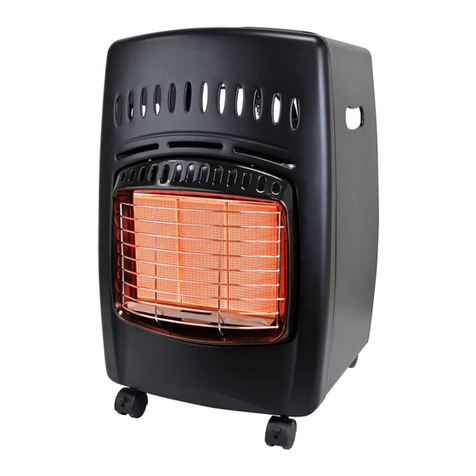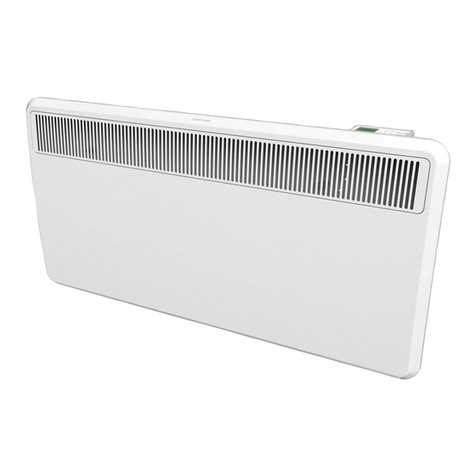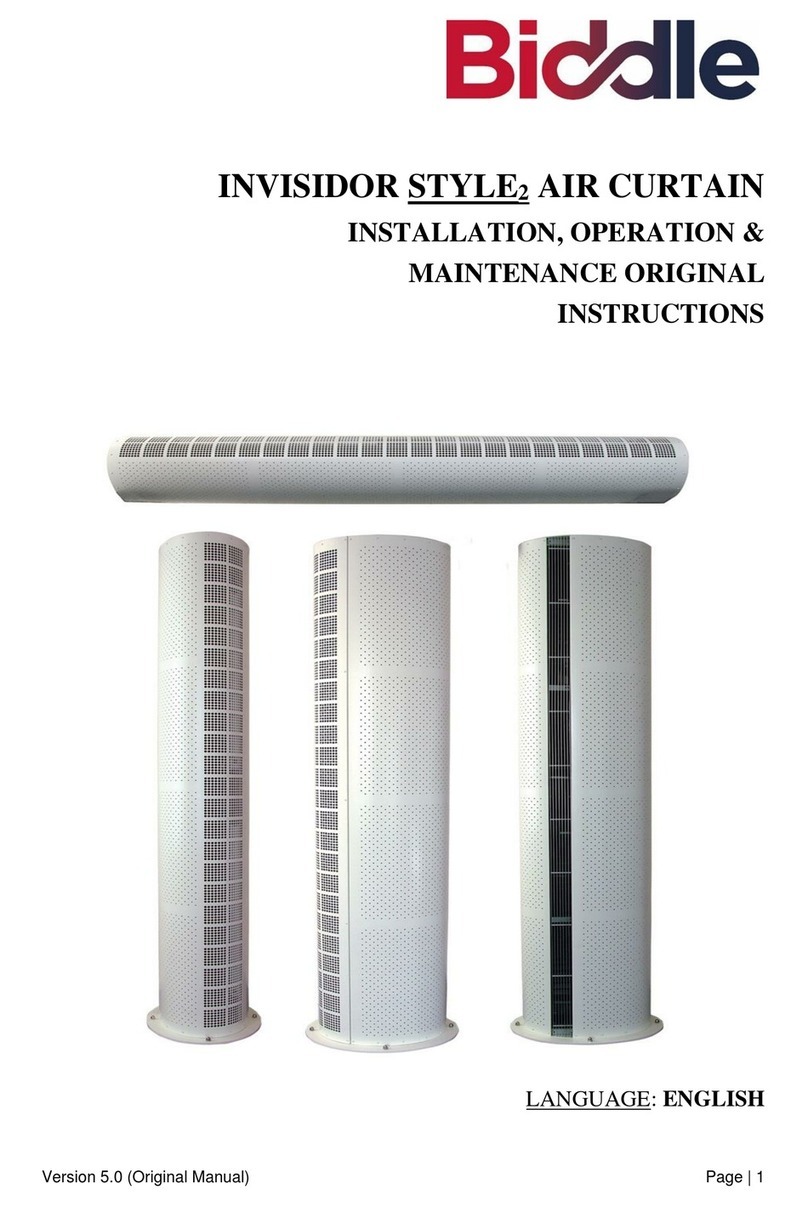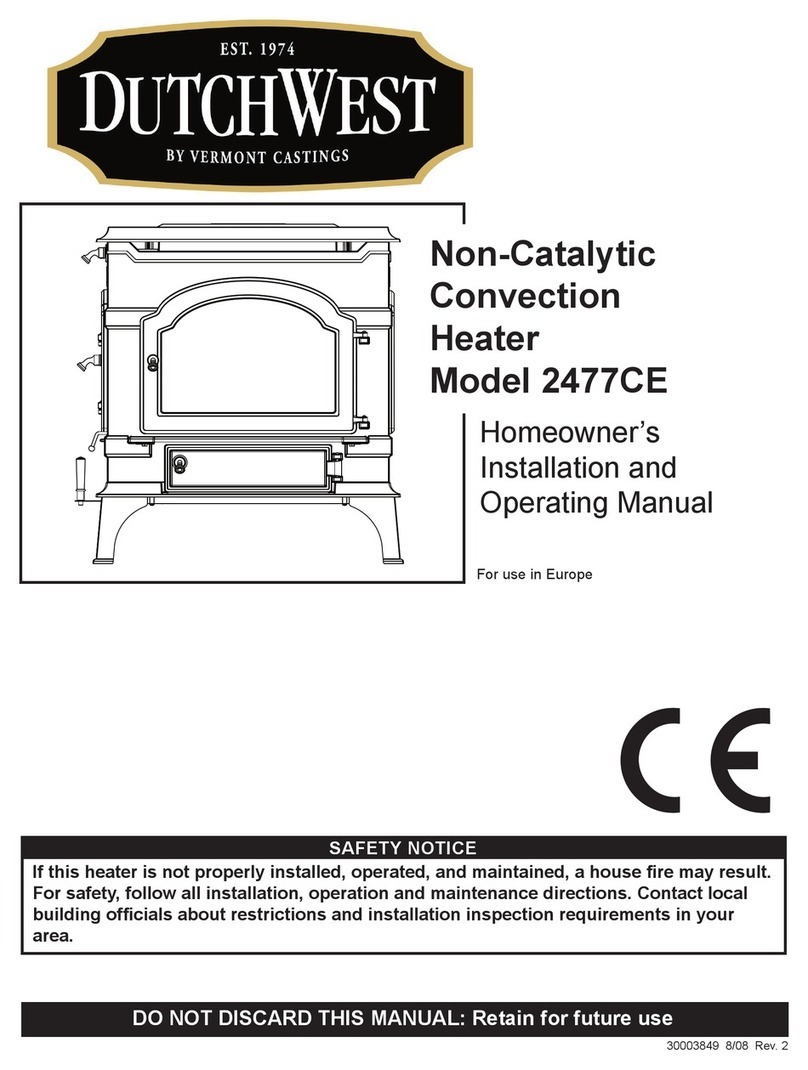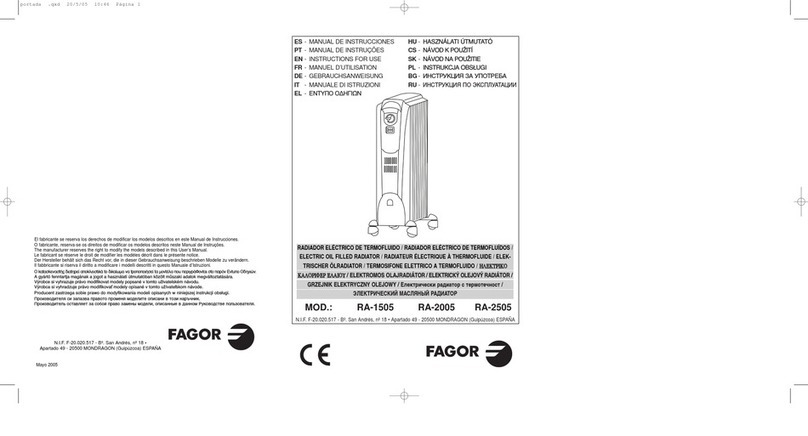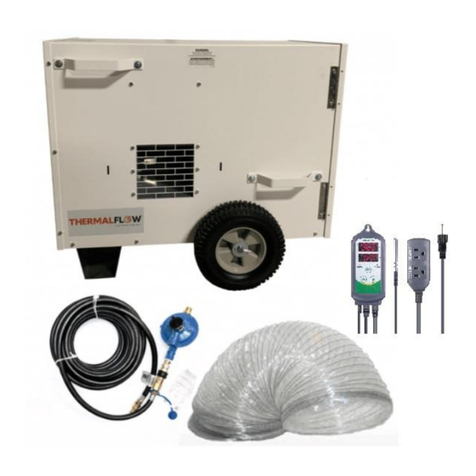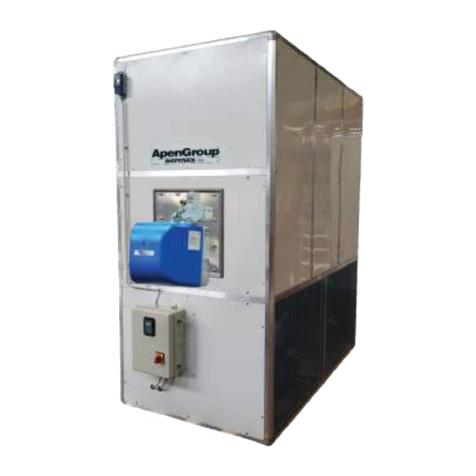
4
2. Intended use
EPO-V series electric heaters are intended for the duct heating of air and for circulation hot-air heating. The heaters are
to be installed in ducts and linked to DUPLEXVENT heat recovery ventilation units providing the transport of air.
3. Technical description
EPO-V series electric heaters are supplied in two ranges – circular haters with capacities between 0.9 kW and 12 kW
and rectangular heaters with capacities between 15.0 kW and 54.0 kW.
As standard, both ranges feature heating radiators, power switching elements with so-called zero voltage switching
(SSR), a built-in return safety thermostat for switching off the control circuit in the case when air temperature exceeds
+70 °C, a built-in manual safety thermostat for swi tching off the control circuit in the case when air temperature exceeds
+120 °C (manual reset), and control electronics allowing to switch on the electric heater via a 10-24 V DC control signal.
4. Storage and transport
The appliance may only be stored in dry, covered places with ambient temperature between -25 °C and +55 °C. During
transportation the appliance must be protected against mechanical damage and leaking water.
During transportation the appliance must be secured against falling and the manner of transportation must eliminate the
possibility of the appliance falling or unfastening during transportation.
5. Installation of the appliance
5.1 Safety instructions
●
The appliance is intended for a normal environment. The protection class of the electrical appliance is IP 43.
●
The appliance complies with CSN EN 60335-1A11, A1 and CSN EN 60335-2-30A1 standards.
●
The appliance must be placed at a safe distance from flammable and easily combustible materials in accordance
with applicable standards and regulations and must be installed onto non-flammable mats.
●
The appliance must be anchored by means of independent fixing yokes or it must be on independent stands. During
installation observe applicable standards and regulations and this manual.
●
Ducts connected to the appliance must be made of non-flammable materials at the length of at least 2 metres on
each side. Connections must be dismountable.
●
During installation, no mechanical damage to the appliance may occur and extra care must be taken when handling
the thermostats and radiators to protect them against damage. The deformation or interruption of the conductors
must be avoided.
●
Installation must be carried out in compliance with the installation instruction manual compiled by the designer of the
air-handling appliance, while maintaining the number of workers or the use of a handling device, particularly when
fixing the electric heater in place, the specified means of access and the installation space.
●
When handling and installing the appliance observe all rules of safety at work (including safety at work in heights
and work with suspended loads) and use suitable work and protective equipment.
●
The lifting device and fastening devices may only be operated by persons qualified for such work.
5.2 Installation conditions
●
The appliance must be installed in one of the permitted positions; we recommend horizontal installation with the
terminal block from above.
●
The direction of air flow through the appliance must comply with the direction of the arrow on the surface of the
appliance. No return air flow may occur in the appliance (against the direction of the arrow). The appliance must
remain permanently accessible.
●
After positioning the appliance in place, make sure it is stable and secure it in such a position against possible
movement.
●
The appliance must be installed into a duct of the same diameter.

